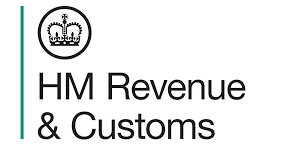HMRC SDLT: Freeports and Investment Zones: SDLT Relief on Leases and Rent Until 2034
SDLTM20260 – Freeports and Investment Zones Relief – Leases and Rent
This section explains the conditions under which relief can be claimed on rent and other considerations subject to Stamp Duty Land Tax (SDLT) for Freeport and Investment Zone tax sites. The relief applies if the lease’s effective date is before specified deadlines, and it remains applicable even if HMRC allows deferred tax payment due to contingent or uncertain consideration.
- Relief applies to any consideration, including rent, subject to SDLT.
- Effective date must be on or before 30 September 2031 for Freeport sites.
- Effective date must be on or before 30 September 2034 for Investment Zone sites.
- Relief is valid if the land is in a special tax site at the transaction time.
- Relief applies even if tax payment is deferred due to contingent or uncertain consideration.
- Refer to SDLTM50900 for deferral application procedures.
“`

Read the original guidance here:
HMRC SDLT: Freeports and Investment Zones: SDLT Relief on Leases and Rent Until 2034
Relief on SDLT for Freeports and Investment Zones
Overview of SDLT Relief
You can claim relief from Stamp Duty Land Tax (SDLT) for different types of payments related to a lease. This includes rent payments. The following conditions apply for you to qualify for SDLT relief:
– The lease grant date must be on or before 30 September 2031 for Freeport tax locations.
– The lease grant date must be on or before 30 September 2034 for Investment Zone tax locations.
– The property must be located in a designated tax site, regardless of when the rent is paid.
This means that even if you pay rent after the specified dates, you can still qualify for SDLT relief as long as the lease is granted on or before those dates.
Understanding Consideration for SDLT
Consideration is the value or payment made in return for a lease, which can include:
– Rent payments
– Premiums or other upfront payments
Relief applies to all forms of consideration that fall under SDLT, meaning you could benefit from lower tax costs on various payments tied to your lease.
Contingent or Uncertain Payments
In some cases, you might be in a situation where the payment you need to make is not clear or is contingent on specific conditions (like future events). If HMRC agrees to delay the tax payment due to this uncertainty, you can still apply for relief if the lease grant date meets the earlier mentioned deadlines.
For those interested in deferral, refer to SDLTM50900 for detailed instructions on how to apply to defer payment.
Key Dates for Freeports and Investment Zones
It is important to be aware of the relevant deadlines for claiming SDLT relief. Here are the dates again, summarised:
– Freeport tax sites: Lease must be granted by 30 September 2031.
– Investment Zone tax sites: Lease must be granted by 30 September 2034.
Make a note of these dates to ensure you do not miss your opportunity for relief.
Why SDLT Relief Matters
Relief from SDLT can significantly reduce your overall costs when taking on a lease in a Freeport or Investment Zone. This financial support encourages businesses to invest in these areas, facilitating growth and providing opportunities for development.
Specifically, the relief aimed at encouraging investment in special economic areas helps businesses manage their budgets more wisely.
Examples of SDLT Relief in Action
Here are a few scenarios to illustrate how SDLT relief applies within Freeports and Investment Zones:
Example 1: Business Leasing Office Space
A company is looking to lease office space in a Freeport area. They sign the lease on 15 September 2029. Because this date is before the 30 September 2031 cut-off, they will benefit from the SDLT relief on both the upfront payment for the lease and the monthly rent.
Example 2: Restaurant in an Investment Zone
A restaurant operator wants to open their business in an Investment Zone. If they grant the lease on 10 June 2033, they can still qualify for relief since it is before the 30 September 2034 deadline, even though they may start paying rent in 2035.
Example 3: Deferred Payments
If a business takes on a lease in a Freeport area where part of the rent payment is contingent on future earnings, they can still apply for SDLT relief as long as the lease grant date is legitimate as defined above. In this case, if HMRC agrees to defer the tax payment until the condition is met, they remain eligible for relief.
Application Process for SDLT Relief
To claim SDLT relief for a lease in a Freeport or Investment Zone, there are certain steps you need to follow:
1. Check Eligibility: Ensure that you meet the criteria, including the lease grant date and the location of the property.
2. Gather Documentation: Compile any necessary paperwork that proves your eligibility. This includes the lease agreement, payment details, and any agreements about deferrals or contingencies.
3. Complete the SDLT Return: Fill in the SDLT return correctly, making sure to include claims for relief. This often involves specifying the nature of your consideration.
4. Submit the Application: Send your SDLT return to HMRC by the required deadline. Keeping records of your submission and correspondence is also important in case of future queries.
5. Await Confirmation: After submission, wait for HMRC to process your claim. Keep an eye on any correspondence from them for confirmation or further actions needed.
Seeking Further Advice
If you have specific questions about your eligibility for SDLT relief on Freeports or Investment Zones, it may be beneficial to consult with a tax advisor or legal expert. They can provide guidance tailored to your situation, ensuring you understand your options clearly.
For detailed information or to apply for deferral payments concerning uncertain considerations, refer to SDLTM50900.
By following these guidelines, you can make the most of the SDLT relief available for your investment area, whether in a Freeport or an Investment Zone. This relief can provide significant savings, helping businesses thrive in these economic growth areas.







